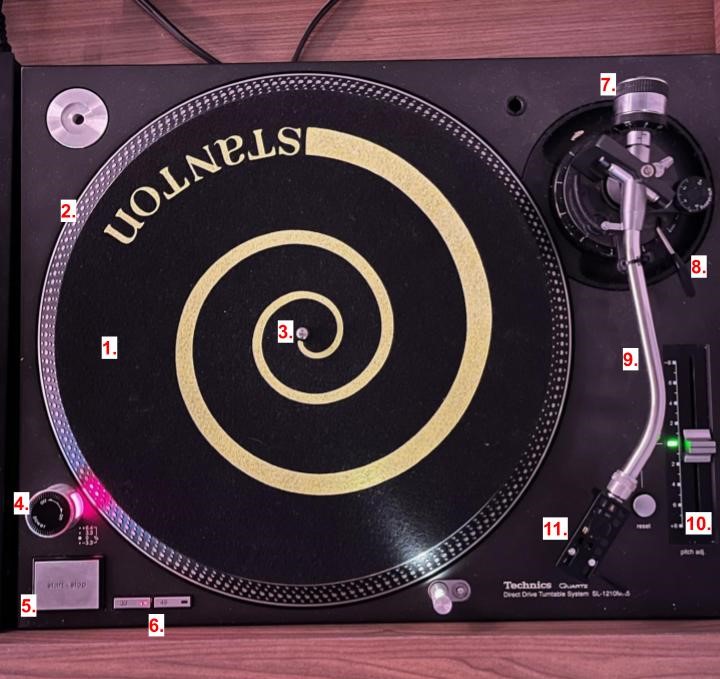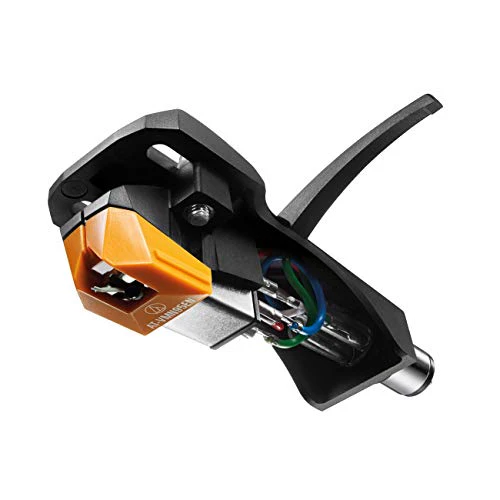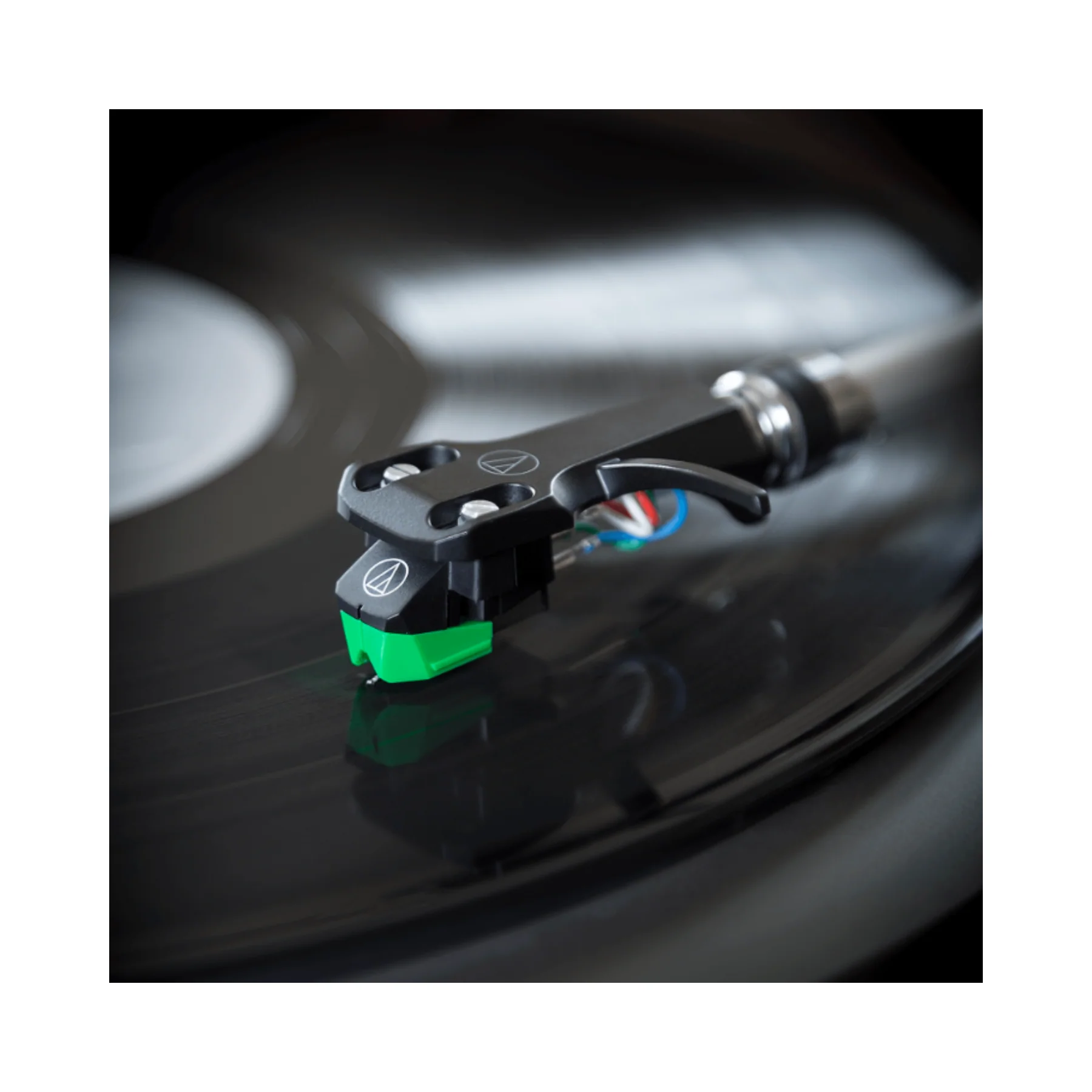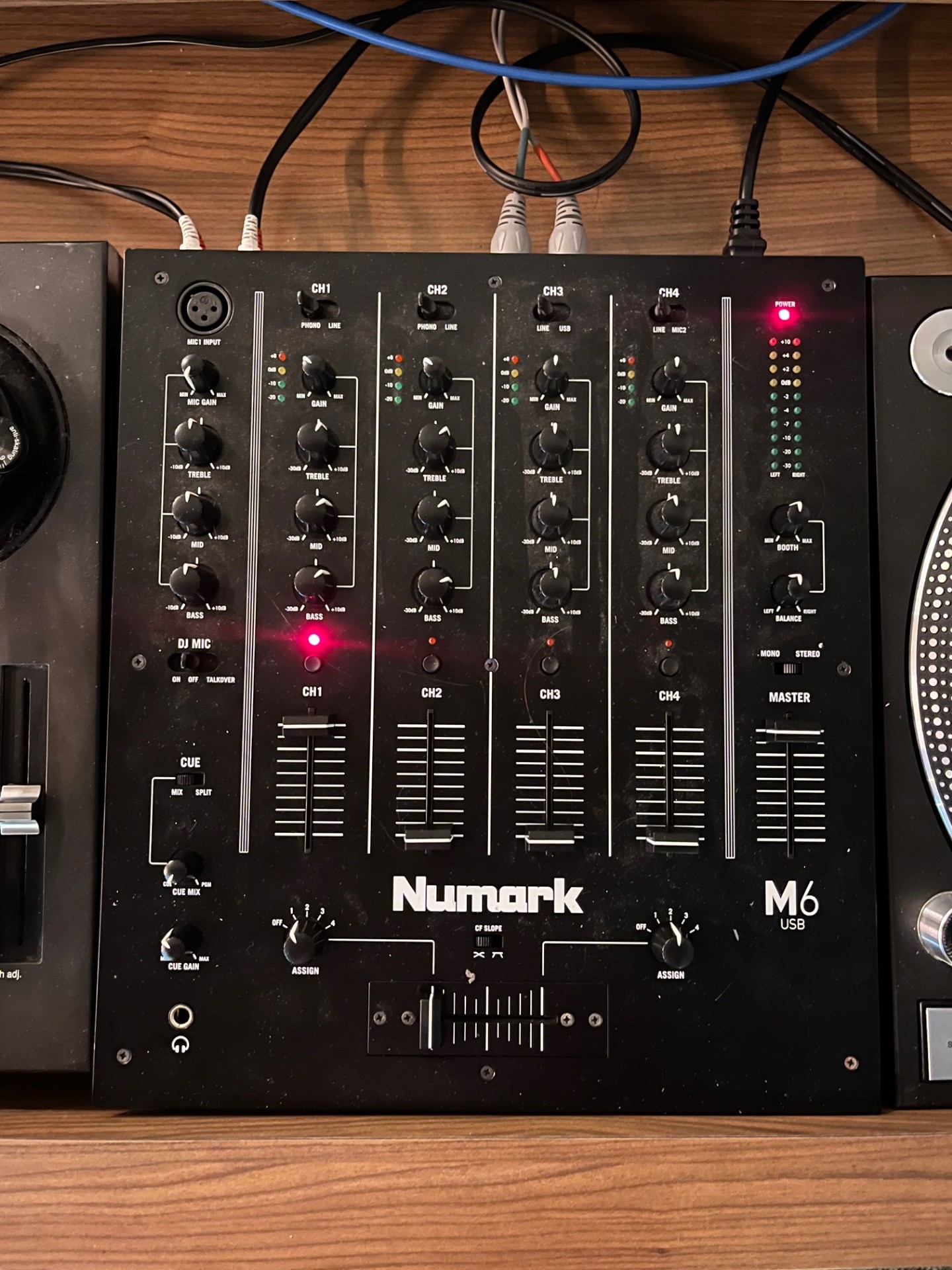Playing Vinyl
Part 1: Understanding the Technology
Before you can play vinyl records, it is important that you understand how the sound you hear is being produced.
From the victrola website:
Vinyl record players are electromagnetic devices that change sound vibrations into electrical signals. When a record spins, it creates sound vibrations that get converted into electrical signals. These signals are fed into electronic amplifiers. Electric amps vibrate and feed the resulting sound into speakers, which amplify it and make it louder. Record players still use the whole needle and groove methodology that a phonograph used, although record players today are much more high tech.
So how do they work exactly? The needle, or stylus of a record player is one of several parts that make up a transducer. A transducer is what changes mechanical energy into electrical energy and changes electrical energy into mechanical energy. The whole system contains a stylus, magnets, coils, cantilever, and a body within a cartridge. The mechanical energy from the sound waves is converted into electrical energy, which is then sent into the amplifier and out to the speakers.
When a vinyl record is made, a needle is used to create grooves in the vinyl that is basically recorded information of the desired sound or music. A needle (or stylus) is also used to read the information contained in the grooves, playing it back so that we can hear the recorded information. On the left side of the groove and on the right side are channels of audio information that makeup stereo sound.
Part 2: Understanding the Studio Equipment
Parts of the turntable
Now that you understand what the needle and grooves are and what they are doing, let's learn the parts of the record player! The record players we use are the Technics SL-1200 family. They are the industry standard for DJing and are famous for their superb sound quality and reliability.
We're only going over the most important components of the record player here, but if you want to learn more, a link to the full manual is at the bottom of this page.
1. This is the turntable slip mat. It rests on the turntable, and prevents damage to the underside of whatever record you are playing.
2. The platter is the main spinning object that is driven by the motor underneath the platter.
3. This is the spindle, and is the center of the player. Be careful when placing a record onto the spindle. If it feels like you need to apply force to get the record on, you're doing it wrong. Make sure you put the record on as vertically as possible
4. This knob is the ON/OFF switch. You will know the player is on if the red light directly below the switch illuminates. You operate the switch by turning it a quarter turn to the right or left.
5. This is the start/stop switch. This turns the motor of the player on or off the moment the button is depressed.
6. These switches select the speed of the player. The options are 33rpm or 45rpm. Large 12" records generally run at 33rpm, and small 7" records generally run at 45rpm. Check the label of the record to verify.
7. This is the counterbalance. The weight the stylus exerts on the record must be very small. This counterweight ensures that this weight is exact all the time. Do not change the counterbalance weight.
8. This bar is called the cue lever. When it is pressed to the back of the record player, it holds the stylus just above the record. When you pull the bar down, it slowly lowers the tonearm (21) and places the stylus on the record.
9. The tonearm connects the stylus and counterweight to the table. Small cables from the stylus run inside the tonearm carrying the audio signal. Be exceptionally careful, and never touch the tonearm itself.
10. Speed control. This fader controls the relative speed of the record. You should generally keep this in the center detent, but if you are trying to match BPM or tone with the other playing record, this can help.
11. This is the headshell which contains the stylus. Only pick the headshell up with your pointer finger under the small hook shaped arm.
The headshell in focus
Pay close attention to the stylus, cartridge, and lead wires. These are the most delicate and important elements of the turntable. Do not ever touch anything in the headshell assembly except for the small arm sticking out of the headshell itself.
DJ Mixer
This is the DJ Mixer in between the two turntables. It is nearly symmetrical, so only the distinct features will be described.
There is a large fader for each player. The left turntable's level is controlled by the left half of controls, and vice versa for the right turntable.
The high, mid, and low knobs control the EQ of the turntable, and have detents at the center.
The gain knobs control the base volume of the player, and should not be changed between tracks. You can change this, but prefer changing the final level at the control board.
The master, mic level, and cue gain knobs all control their respective levels. If you want to learn more about the concept of cueing, see the control board manual.
The cue slider controls which channel is fed into the cue bus.
The center slider at the bottom controls which channel is sent to the output.
The channel for Turntable 1 is Channel 1, and the channel for Turntable 2 is Channel 2.
The curve selectors control the profile of the EQ. The recommended setting is MID
The Phono/Line switch should always be set to PHONO. This is because the Technics turntables do not have built in preamplifiers, so their signals are very quiet. The mixer provides preamplification when the switch is in the phono.
Part 3: Mixing Music!
- Once you have selected the vinyl you want to play, put the first track on the player.
- Lower the cartridge using the cue lever.
- Use the headphone jack on the console and keep the first track off, but cued.
- Turn the player on and find the start of the song.
- When you're ready to play, turn the TT2 input on the board on
- Press the start/stop button, and let the music flow!
- While the first track is playing, place the second on the other turntable and begin finding the start of the next song using the cueing headphones.
- To fade between tracks, smoothly move the slider from one side to another while pressing the start/stop button on the turntable with the track playing next




